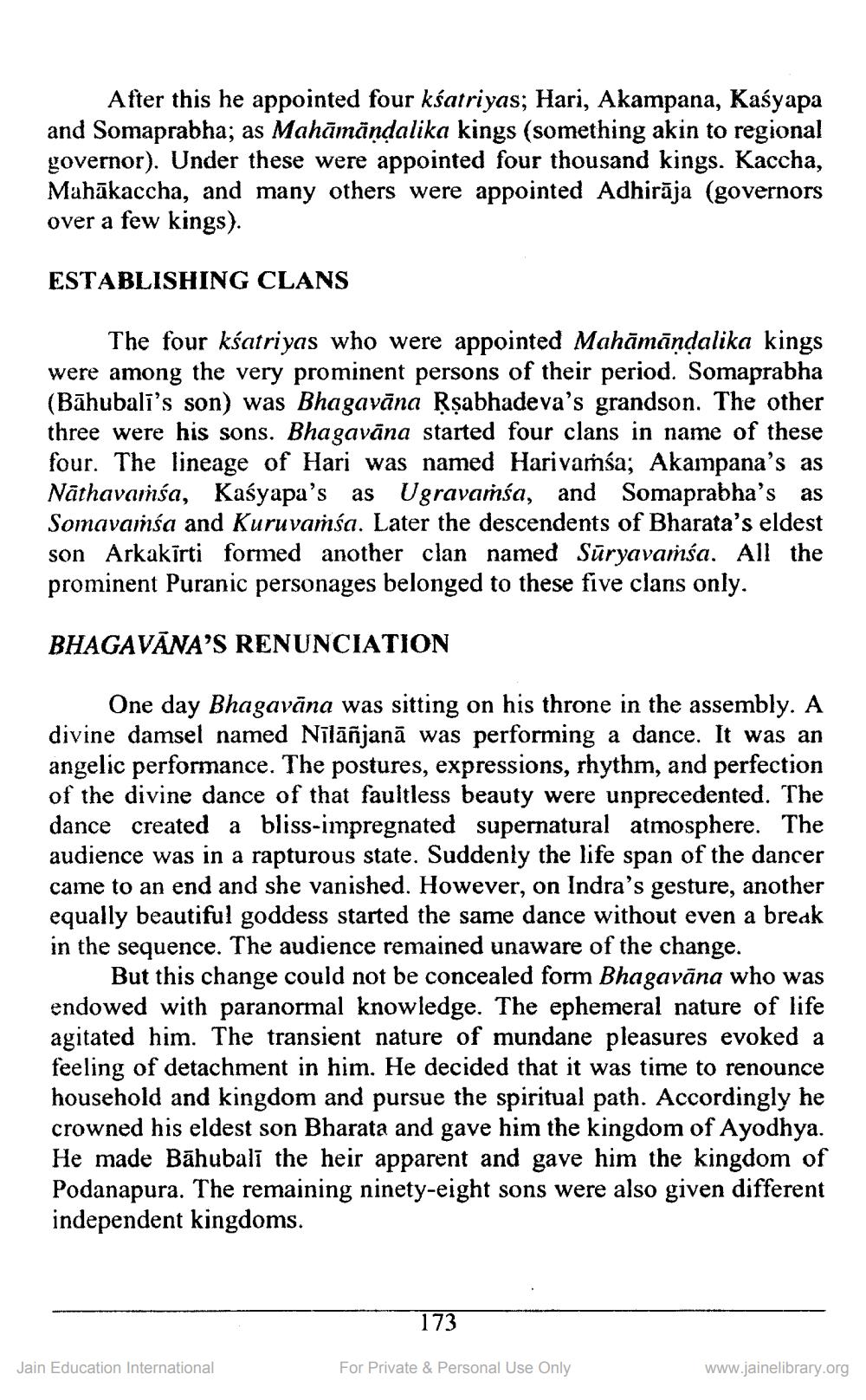________________
After this he appointed four ksatriyas; Hari, Akampana, Kasyapa and Somaprabha; as Mahāmāṇḍalika kings (something akin to regional governor). Under these were appointed four thousand kings. Kaccha, Mahākaccha, and many others were appointed Adhirāja (governors over a few kings).
ESTABLISHING CLANS
The four ksatriyas who were appointed Mahāmāṇḍalika kings were among the very prominent persons of their period. Somaprabha (Bahubali's son) was Bhagavāna Ṛṣabhadeva's grandson. The other three were his sons. Bhagavāna started four clans in name of these four. The lineage of Hari was named Harivaṁśa; Akampana's as Nathavamsa, Kasyapa's as Ugravaṁśa, and Somaprabha's as Somavaṁśa and Kuruvaṁśa. Later the descendents of Bharata's eldest son Arkakirti formed another clan named Suryavaṁśa. All the prominent Puranic personages belonged to these five clans only.
BHAGAVĀNA'S RENUNCIATION
One day Bhagavāna was sitting on his throne in the assembly. A divine damsel named Nīlāñjanā was performing a dance. It was an angelic performance. The postures, expressions, rhythm, and perfection of the divine dance of that faultless beauty were unprecedented. The dance created a bliss-impregnated supernatural atmosphere. The audience was in a rapturous state. Suddenly the life span of the dancer came to an end and she vanished. However, on Indra's gesture, another equally beautiful goddess started the same dance without even a break in the sequence. The audience remained unaware of the change.
But this change could not be concealed form Bhagavāna who was endowed with paranormal knowledge. The ephemeral nature of life agitated him. The transient nature of mundane pleasures evoked a feeling of detachment in him. He decided that it was time to renounce household and kingdom and pursue the spiritual path. Accordingly he crowned his eldest son Bharata and gave him the kingdom of Ayodhya. He made Bahubali the heir apparent and gave him the kingdom of Podanapura. The remaining ninety-eight sons were also given different independent kingdoms.
Jain Education International
173
For Private & Personal Use Only
www.jainelibrary.org




